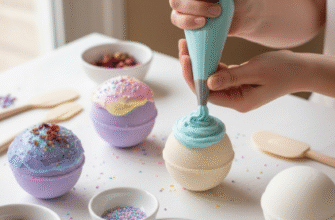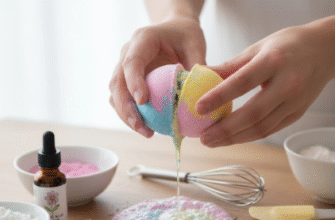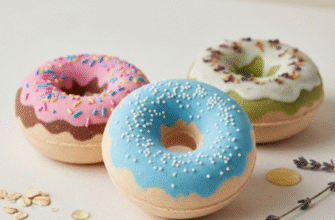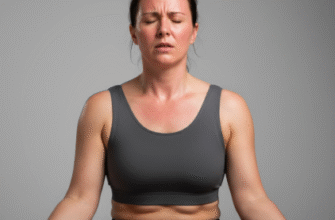You’ve navigated the big decisions: the perfect tile, the vanity that sings, the bathtub promising sanctuary. The paint is drying, the fixtures are gleaming, and your dream bathroom is *almost* complete. But hold on, there’s one crucial stage left, the one that often gets relegated to an afterthought but truly makes the space shine: selecting the bathroom hardware. Think of it as the jewelry for your room – the final touch that ties everything together, adding personality, function, and a sense of completion. Don’t rush this part; the right hardware elevates the entire design.
Choosing hardware might seem simple initially, but the sheer variety of options can feel overwhelming. It’s more than just picking a towel bar. It’s about creating a cohesive and practical environment. From the humble toilet paper holder to the statement shower controls, each piece plays a role. Let’s break down how to approach this final, vital step.
Understanding the Essentials: What Hardware Do You Need?
Before falling in love with a finish or style, take stock of what your bathroom actually requires. Functionality comes first. Walk through your daily routine in the space:
- Towel Storage: Will you use bars, rings, hooks, or a combination? Consider how many towels need accommodating daily and for guests. Bars offer maximum drying space, rings are great near sinks, and hooks are versatile space-savers, perfect for robes too.
- Toilet Paper Holder: A non-negotiable! Styles range from standard wall-mounted rollers to freestanding units or recessed holders. Think about placement for ease of reach.
- Cabinet Hardware: Knobs or pulls for your vanity drawers and doors? This choice significantly impacts the look and feel. Knobs are classic, while pulls can be more modern and sometimes easier to grip. Consider the scale of your cabinetry.
- Robe Hooks: Often overlooked but incredibly useful. One near the shower and perhaps another near the door adds convenience.
- Shower Fixtures: While often chosen earlier with plumbing, the shower head, valve trim, and tub spout are technically hardware. Ensure their style and finish coordinate with your other selections if possible, though sometimes these are dictated by the plumbing system itself.
- Grab Bars (Optional but Recommended): Especially important for accessibility and safety, grab bars now come in stylish designs that don’t scream “institutional.”
Decoding Finishes: The Color and Texture Palette
The finish of your hardware is arguably its most defining characteristic. It dictates the mood – sleek and modern, warm and traditional, or boldly contemporary. Here are some popular contenders:
- Polished Chrome: The classic choice. Bright, reflective, durable, and generally affordable. It fits well in most styles, from traditional to modern, but does show water spots and fingerprints readily.
- Brushed Nickel/Satin Nickel: A softer, more muted silver tone than chrome. It has a subtle texture that hides water spots and fingerprints better, making it very popular and versatile. Works beautifully in transitional and contemporary spaces.
- Matte Black: A bold, dramatic, and increasingly popular choice. It makes a strong statement, particularly in modern, industrial, or farmhouse designs. It resists fingerprints but can sometimes show dust or hard water deposits depending on the quality of the finish.
- Brass (Polished, Satin, Antique, Champagne): Brass tones bring warmth and luxury. Polished brass is traditional and glamorous, satin brass offers a softer modern feel, antique brass has vintage appeal, and champagne bronze/brass is a trendy muted gold. Be aware that unlacquered brass will develop a natural patina over time, which some desire and others avoid.
- Oil-Rubbed Bronze: Dark, rich, and offering a touch of old-world charm. Often features subtle copper highlights. Works well in traditional, Tuscan, or rustic bathrooms.
- Polished Nickel: Similar to chrome but with a slightly warmer, yellowish undertone. Offers a high-end, sophisticated look.
To Match or Not to Match?
The age-old question! There’s no single right answer. Matching all your hardware finishes creates a very cohesive, intentional, and streamlined look. It’s a safe bet and often recommended for achieving a clean aesthetic. However, mixing finishes can add depth, personality, and visual interest, preventing the space from looking too uniform or “catalogue perfect.”
If you decide to mix:
- Be Intentional: Don’t mix randomly. Have a plan. Perhaps all the plumbing fixtures (faucet, shower trim) are one finish (like brushed nickel), while all the accent hardware (cabinet pulls, towel bars, hooks) are another (like matte black).
- Stick to Two or Three Finishes Max: Any more can look chaotic.
- Consider Placement: Keep finishes consistent within a specific zone (e.g., all sink hardware matches) or type (e.g., all lighting fixtures match).
- Balance Warm and Cool Tones: Mixing chrome (cool) with brass (warm) can work if done thoughtfully, often tied together by other elements in the room.
Style Synergy: Aligning Hardware with Your Bathroom’s Vibe
Hardware should complement, not clash with, your bathroom’s overall design style. Think about the shapes and lines:
- Modern/Minimalist: Look for clean lines, simple geometric shapes (squares, rectangles), and finishes like matte black, chrome, or brushed nickel. Sleek bar pulls are often preferred over knobs.
- Traditional: Opt for more ornate details, curves, and classic finishes like polished nickel, polished brass, or oil-rubbed bronze. Detailed knobs and cup pulls fit well.
- Transitional: This style blends modern and traditional. Simple shapes with slightly softer edges work well. Brushed nickel, satin brass, and polished chrome are excellent choices.
- Farmhouse/Rustic: Matte black, oil-rubbed bronze, or even antique brass can enhance this look. Simple, functional shapes, sometimes with a slightly industrial feel, are suitable. Consider cup pulls or simple knobs.
- Industrial: Think utilitarian shapes, perhaps exposed pipe details. Matte black, dark bronze, or even unfinished metals can work.
Don’t forget scale. Delicate hardware might get lost on large vanity drawers, while oversized pulls could overwhelm a small cabinet. Strive for balance.
Functionality and Practicality: Beyond the Looks
A beautiful towel bar is useless if it’s installed where you can’t easily reach it from the shower. Think practically about placement:
- Towel Bars/Rings: Place near the shower/tub exit and sink. Ensure enough clearance for towels to hang freely.
- Toilet Paper Holder: Position it within comfortable reach from a seated position, typically slightly in front of the bowl and at a convenient height (around 26 inches off the floor is standard, but adjust for your household).
- Robe Hooks: Near the shower is essential. On the back of the door is another popular spot.
- Cabinet Hardware: Ensure knobs/pulls are comfortable to grip and easy to use. Consider who will be using them – larger pulls might be easier for those with limited dexterity.
Durability is also key. Bathrooms are high-humidity environments. Choose hardware made from solid materials (like brass, stainless steel) with high-quality finishes resistant to rust and corrosion. Cheaper plated hardware might look good initially but can pit, peel, or tarnish quickly.
Measure Twice, Drill Once! Before installing any hardware, especially towel bars or cabinet pulls, double-check your measurements. Use a level to ensure items are straight. Consider what’s behind the wall – avoid drilling into pipes or electrical wiring. Always use appropriate wall anchors if not screwing directly into a stud for heavier items like towel bars.
Budgeting for the Bling
Bathroom hardware costs can vary wildly. You can find basic chrome knobs for a couple of dollars each, while high-end designer pulls in specialty finishes can run upwards of $50-$100 *per piece*. Faucets and shower systems represent another significant investment.
Set a realistic budget early on. Decide where you want to splurge and where you can save. Perhaps invest more in the pieces you interact with daily, like the faucet and cabinet pulls, and opt for a more budget-friendly option for the toilet paper holder or robe hooks if needed. Remember that quality often correlates with price, especially regarding the durability of the finish in a damp environment.
The Final Polish
Choosing bathroom hardware is the finishing touch that personalizes your space and ensures it functions beautifully. It’s where practicality meets personality. By considering the types of hardware needed, exploring different finishes and styles, prioritizing functionality, and budgeting accordingly, you can select pieces that not only look fantastic but also stand the test of time. Don’t underestimate the impact of these small details – they are the elements that truly elevate a well-designed bathroom from good to great, providing that satisfying sense of completion.








